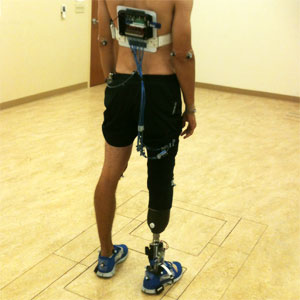 Recent global conflicts have contributed to more veterans seeking prosthetics than ever before. Comprehensive data from the Veteran’s Administration for fiscal year 2008 alone indicated that over 1.9 million men and women sought prosthetics at a cost of over $1.6 billion dollars.
Recent global conflicts have contributed to more veterans seeking prosthetics than ever before. Comprehensive data from the Veteran’s Administration for fiscal year 2008 alone indicated that over 1.9 million men and women sought prosthetics at a cost of over $1.6 billion dollars.
Veterans are playing a vital role in the recent evolution of next generation prosthetics that actually communicate with the human body. The prosthetic arms available today can sense tiny changes in electrical impulses. The sensors read the intensity of the impulse and can allow the individual to move the arm and the connected prosthetic limb in a much more smooth and natural way.
A prosthetic leg is a little trickier because one wrong signal could mean a tumble down the stairs or tripping into a busy intersection. Scientists have been working aggressively toward mitigating this challenge. Recently, the Rehabilitation Institute of Chicago (RIC) introduced their newest mind-controlled prosthetic leg and is collecting data from its research recipients who are using it. The leg works in a similar way in that the signals are read and interpreted by the sensors. In this case, though, the sensors are extraordinarily sensitive and integrated.
For healthcare professionals looking for a career that interconnects smart medicine with revolutionary technology, the field of prosthetics is a vibrant choice. The field requires professionals to have a variety of anatomy and physiology acumen, as well as technical training in the specific area of interest. Other professionals provide supportive roles by keeping data for ongoing studies, helping patients learn how to integrate with the prosthetics and advocating for more research dollars to fund the field.
References:
http://www.theverge.com/2013/9/26/4774444/rehabilitation-institute-chicago-creates-mind-controlled-bionic-leg
http://www.livescience.com/40542-fop-stone-man-syndrome-bionic-arm.html
http://www.va.gov/opa/publications/factsheets/fs_prosthetics_sensory_aids.pdf








